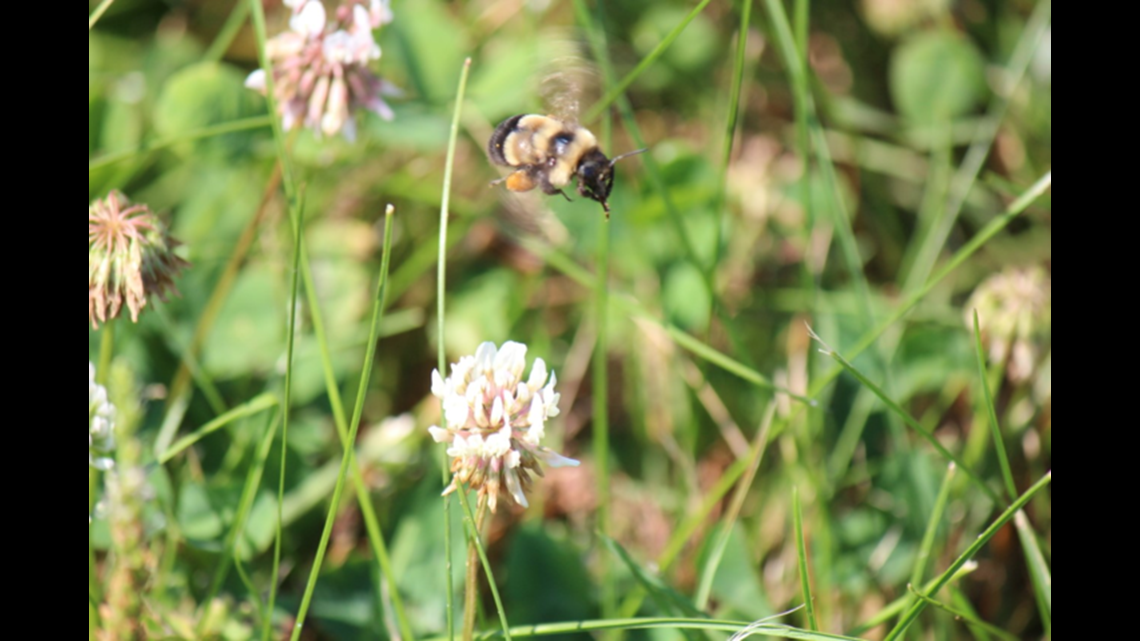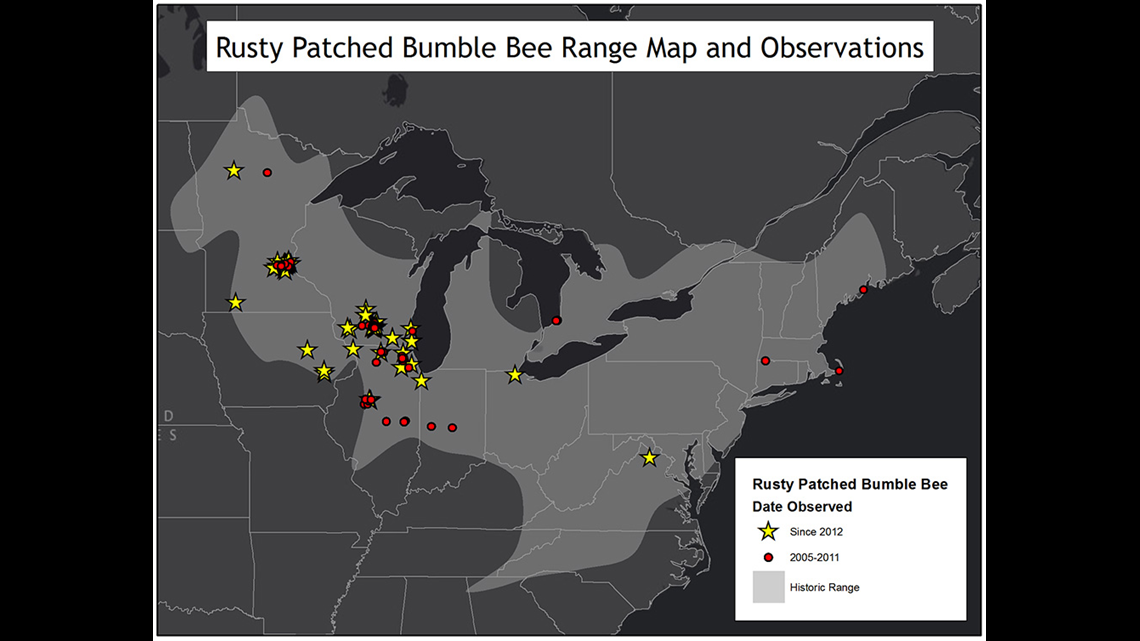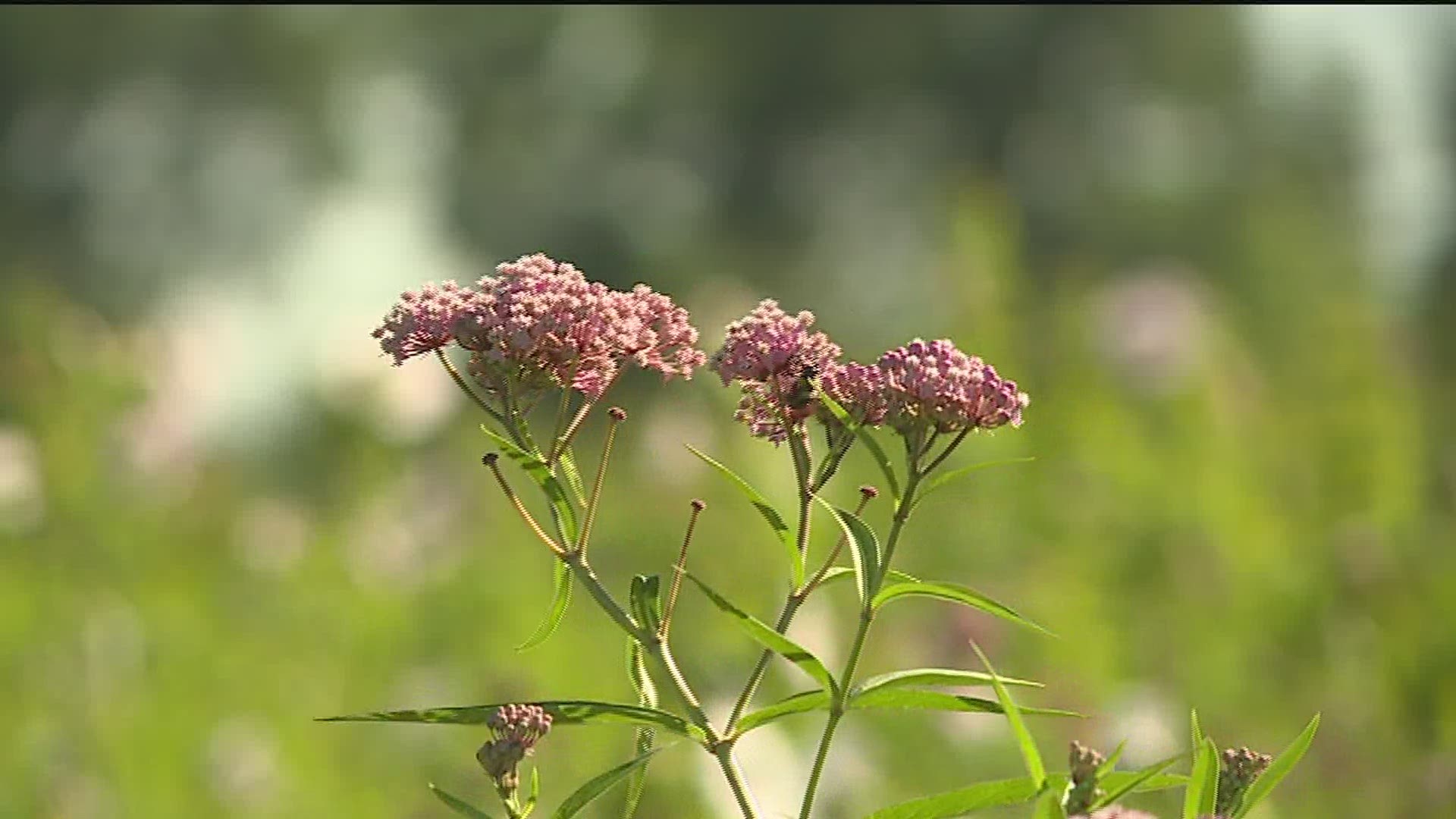DAVENPORT, Iowa — A worker at Nahant Marsh has found a rarity: a bee listed on the endangered species list.
"I came across one photo, and I thought, 'Oh my god, I think this is the rusty patched bumblebee,'" says Amy Loving, the director of education at Nahant, who captured the bee on camera all by accident.


"I was out taking photos and I love to take photos of bumblebees and dragonflies and flowers," she says.
The U.S. Fish and Wild Life Service (USFWS) says the Rusty Patched Bumblebee has been on the endangered species list since February 2017.
The bee's population has declined 87 percent in two decades.
The bees used to be found all over from New York to Minnesota. Now, there have been a handful of sightings in the past two decades. Although in recent years, sightings have increased.


USFWS says habitat loss, pesticides and climate change all hurting the Rusty Patched Bumblebee and all pollinators.
That makes finding a rusty patched all the more special.
"It's really encouraging to know that our management practices are working and they like it here clearly since one was found," says Kinsey Nielsen, Nahant's natural resource manager. "So we're gonna keep doing what we`ve been doing."
Nielsen says they're constantly working to diversifying the prairie along the marsh, removing invasive species and planting more native plants.
Plus, Nielsen says Nahant is expanding. The marsh is adding 39 acres to the southwest. They're transforming the field to wetlands and sand prairie.
Nielsen says the wetlands will now only support the bees but will also help fight flooding along the Mississippi River.
"When we are supporting and providing habitat for one species of bumblebee, we`re supporting other bumblebees and other native pollinators because they`re going to utilize the same plants for food and nectar," Loving says.
Nielsen and Loving agree there are a few small things people can do to help the bees.
First, they can take part in the Backyard Bee Challenge. The official challenge for Summer 2020 is over, but you can still help track bees and other pollinators right at home.
Loving encourages people to download the iNaturalist App, where they can snap photos of insects, animals and plants, then upload them for researchers to identify. This helps them track populations and ranges.
Second, you can plant native foliage. Loving says pollinators love milkweed, hibiscus and coneflowers.
The Nahant team says they're keeping an eye out for more Rusty Patched Bumblebees. They suspect there's a colony somewhere.
Loving says the marsh could become eligible for some grant funding with this discovery. For now, they're going to continue their conservation efforts.

